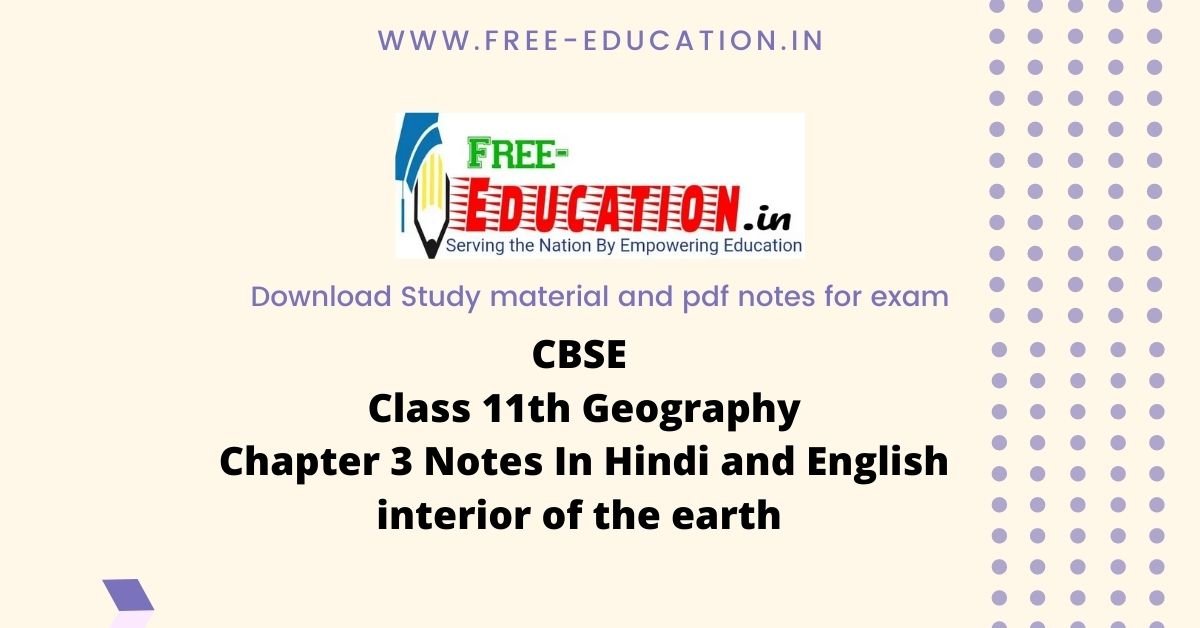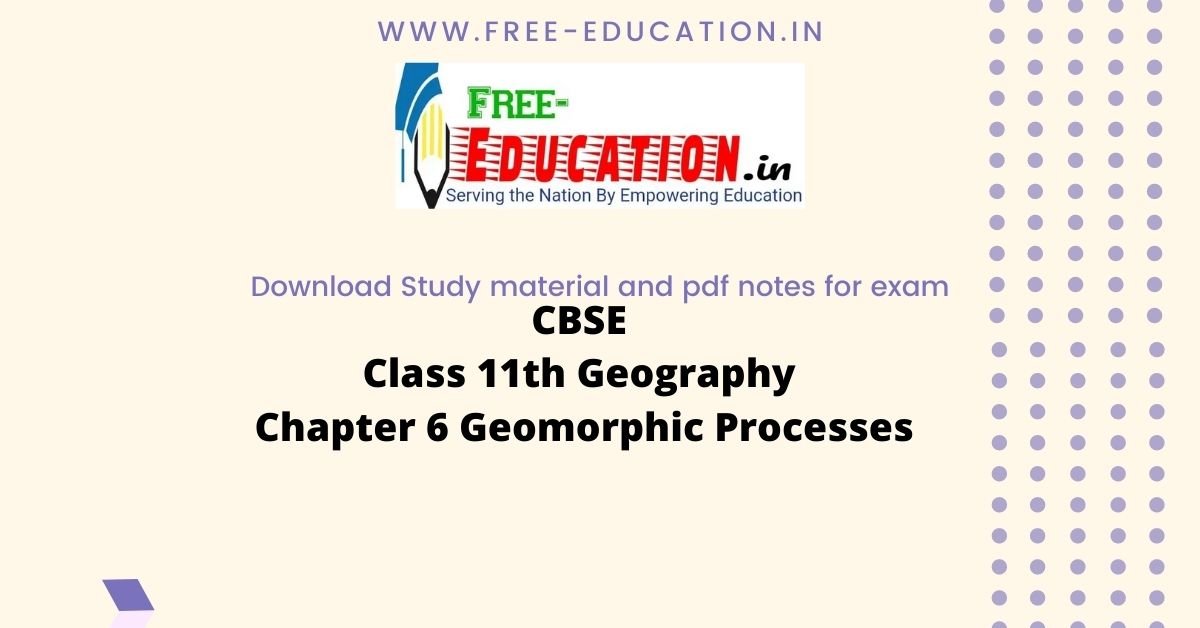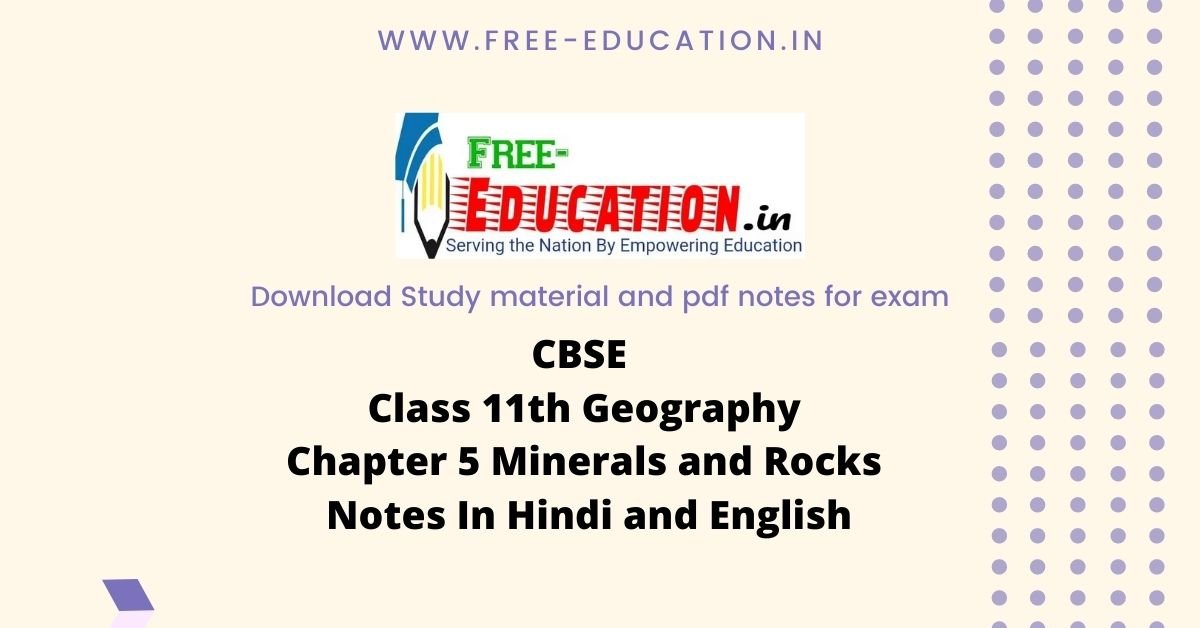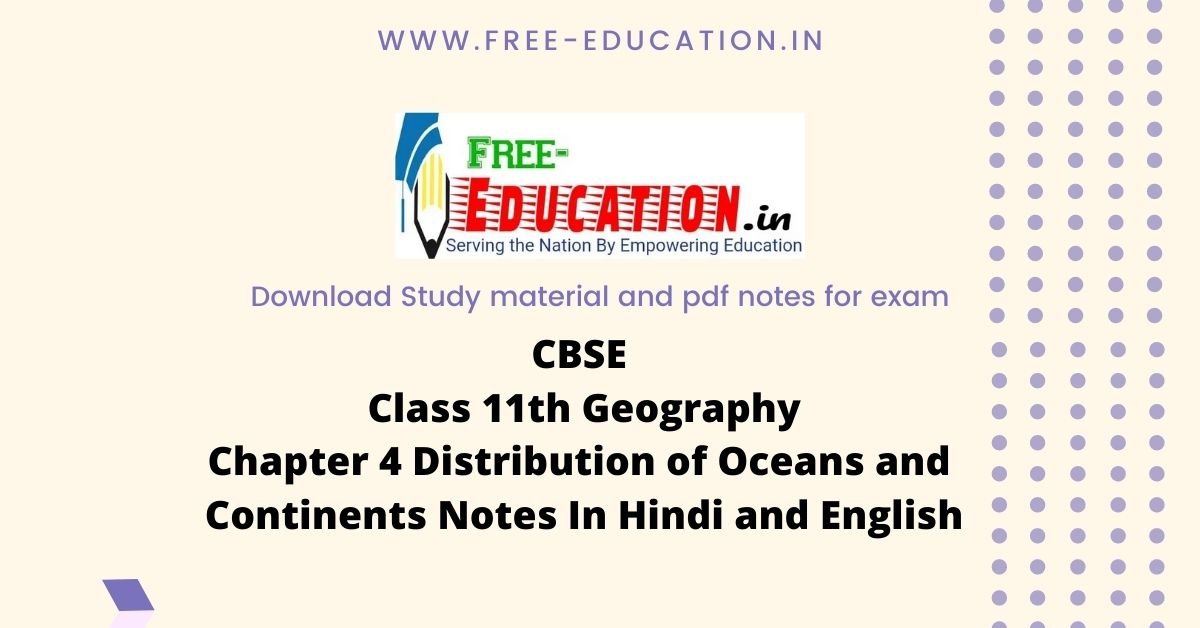Class 11 Geography Notes Chapter 3 Interior of the Earth
- Gold mines in South Africa are as deep as 3 – 4 km. Going beyond this depth is not possible as it is very hot at this depth.
- The earth’s radius is 6,370 km.
- Earthquakes, volcanic eruptions and magma are major sources of the information on interior of the earth. The indirect sources include analysis of the information, meteors reaching the earth, gravitation, magnetic field, and seismic activity.
- We get to know through mining activity that temperature and pressure increase with the increasing distance from the surface towards the interior in deeper depths. Moreover, it is also known that the density of the material also increases with depth. It is possible to find the rate of change of these characteristics.
- The lithosphere refers to the portion of depth up to 200 km from the surface of the earth.
- An instrument called ‘seismograph’ records the waves reaching the surface.
- The velocity of waves changes as they travel through materials with different densities. The denser the material, the higher is the velocity.
- Seismographic waves are of two types: P waves and S waves.
- The seismographs located beyond 145° from epicenter, record the arrival of P-waves, but not that of S-waves.
- A zone between 105° and 145° from epicenter was identified as the shadow zone for both the types of waves.
- The entire zone beyond 105° does not receive S-waves. The shadow zone of S-wave is much larger than that of the P-waves. The shadow zone of P-waves appears as a band around the earth between 105° and 145° away from the epicenter.
- Earthquakes are of two types: a) Tectonic earthquake and b) Volcanic earthquake.
- The magnitude of earthquake is measured through Richter Scale. It relates to the energy released during the quake. The magnitude is expressed in absolute numbers, 0-10. The intensity scale is named after Mercalli, an Italian seismologist.
- The Crust is the outermost solid part of the earth. It is brittle in nature. The thickness of the crust varies under the oceanic and continental areas. Oceanic crust is thinner as compared to the continental crust.
- The mean thickness of oceanic crust is 5 km whereas that of the continental is around 30 km. The continental crust is thicker in the areas of major mountain systems. It is as much as 70 km thick in the Himalayan region.
- The portion of the interior beyond the crust is called the mantle. The mantle extends from Moho’s discontinuity to a depth of 2,900 km.
- The Core is the innermost portion of the earth. The core- mantle boundary is located at the depth of 2,900 km. The outer core is in liquid state while the inner core is in solid state. The depth of the core is from 2900 km to 6378 km.
- Barring the basalt flows, the shield volcanoes are the largest of all the volcanoes on the earth. The Hawaiian volcanoes are the most famous examples.

Class 11 Geography Notes Chapter 3 Important Terms:
- Earthquake: An earthquake in simple words is shaking of the earth. It is a natural event.It is caused due to release of energy, which generates waves that travel in all directions.
- Lithosphere: The lithosphere refers to the portion of depth up to 200 km from the surface of the earth,
- Volcano: A volcano is a place where gases, ashes and/or molten rock material – lava – escape to the ground.
- Active Volcano: A volcano is called an active volcano if the materials mentioned are being released or have been Released out in the recent past.
- Magma: As long as liquid rocks arena the upper portion of the mantle, it is called magma.
- Lava: When magma reaches the irust of the earth, it is called lava.
- Intrusive Forms: The lava that, cools within the crustal portions assumes different forms. These forms are called intrusive forms.
- Batholiths: A large body of magmatic material that cools in the deeper depth of the crust develops in the form of large domfss.’Batholiths are the cooled portion of magma chambers.
- Caldera: These are the most explosive of the earth’s volcanoes. They are usually so explosive that when they erupt they fend to collapse on themselves rather than building any tall structure. The collapsed depressions are called calderas.
- Lacoliths: These are large dome-shaped intrusive bodies with a level base and connected by a pipe-like conduit from below. It resembles the surface volcanic domes of composite volcano, only these are located at deeper depths.
- Lapolith: As and when the lava moves upwards, a portion of the same may tend to move in a horizontal direction wherever it finds a weak plane. It may get rested in different forms.‘ In case it develops into a saucer shape, concave to the sky body, it is called lapolith.
- Phacolith: A wavy mass of intrusive rocks, at times, is found at the base of synclines or at the top of anticline in folded igneous country. Such wavy materials have a definite conduit to source beneath in the form of magma chambers (subsequently developed as batholiths). These are called the phacoliths.
- Sills: The near horizontal bodies gf the intrusive igneous rocks are called sill or sheet, depending on the thickness of the material. The thinner ones are called sheets while the thick horizontal deposits are called sills.
- Hypocentre: The point where the energy is released is called the focus of an earthquake, alternatively, it is called the hypocentre.
- Epicentre: The point on the surface which is nearest to the focus of energy is called epicenterIt is the first one to experience the waves. It is a point directly above the focus.
- Crust: The Crust is the outermost solid part of the earth.
- Mantle: The portion of the interior beyond the crust is called the mantle.
- Gravity Anomalies: The difference in readings from the expected values is called gravity anomaly. Gravity anomalies give us information about the distribution of mass of the material in the crust of the earth.
- Shadow Zone: There exist some specific areas where the waves are not reported. Such a zone is called the ‘shadow zone’.
- Richter Scale: The earthquake events are scaled either according to the magnitude or intensity of the shock. The magnitude scale is known as the Richter scale.
- Shield Volcanoes: These volcanoes are mostly made up of basalt, a type of lava that is very fluid when erupted. For this reason, these volcanoes are not steep.
- Composite Volcanoes: These volcanoes are characterised by eruptions of cooler and more viscous waves than basalt. These volcanoes often result in explosive eruptions.
- P-waves: P waves move faster and are the first to arrive at the surface. These are also called ‘primary waves’.
- S-.waves: S-waves arrive at the surface with some time lag. These are called secondary waves .
Category: CBSE Class 11th Geography
Mohd. Sharif Qualification: B.Tech (Mechanical Engineering) [Founder of Wisdom Academy] [Aim Foundation & Free-Education.In] [Engineer By Profession | Teacher By Choice] [Blogger, YouTube Creator]
Subscribe
Login
0 Comments
Oldest






